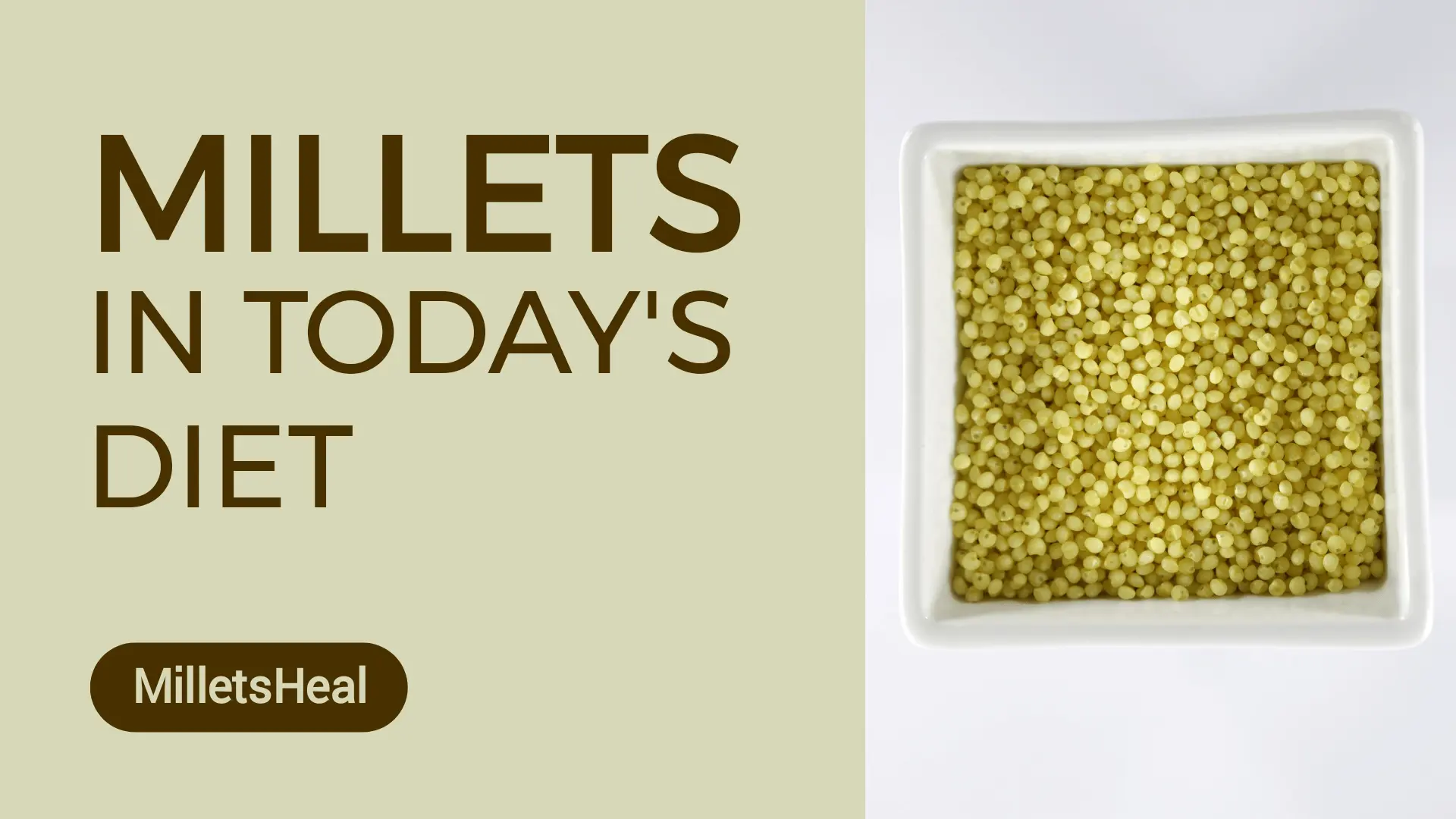In a world dominated by trendy superfoods and dietary fads, it’s easy to overlook the humble grains that have nourished civilizations for millennia.
Millets, a group of ancient grains, have been a staple in diets across Asia and Africa for thousands of years.
However, with the rise of modern farming and the increased consumption of rice and wheat, millets gradually faded into the background.
But now, there’s a resurgence of interest in these small yet mighty grains, and for good reason. In this blog post, we’ll explore the nutritional benefits of millets, their historical significance, and how you can incorporate them into your modern diet.
The Historical Significance of Millets
Before diving into the nutritional aspects of millets, it’s essential to understand their historical significance.
Millets have been cultivated for over 7,000 years, making them one of the oldest cultivated grains known to humankind.
They were a staple crop in many ancient civilizations, including those in China, India, Africa, and Europe.
In India, for instance, millets were a primary source of sustenance, especially in regions with arid climates. Varieties such as pearl millet, foxtail millet, and finger millet were commonly grown and consumed.
These grains played a crucial role in providing essential nutrients to the population, particularly during times of drought and famine.
The Nutritional Powerhouses
Millets might be small in size, but they pack a powerful nutritional punch. Here’s why these ancient grains deserve a place in your modern diet:
Rich in Nutrients
Millets are loaded with essential nutrients like fiber, protein, vitamins, and minerals. They are particularly high in magnesium, which is essential for bone health, muscle function, and blood sugar regulation.
Gluten-Free
Unlike wheat and barley, which contain gluten, millets are naturally gluten-free. This makes them an excellent choice for individuals with gluten sensitivities or celiac disease.
Low Glycemic Index
Millets have a low glycemic index (GI), which means they have a minimal impact on blood sugar levels. This makes them a suitable choice for managing diabetes and promoting stable energy throughout the day.
High Fiber Content
Millets are a fantastic source of dietary fiber, which aids in digestion, helps maintain a healthy weight, and reduces the risk of chronic diseases like heart disease and colon cancer.
Antioxidant Properties
Some millet varieties, such as finger millet (ragi), are rich in antioxidants like phenolic compounds. These antioxidants help protect the body from oxidative stress and inflammation.
Heart-Healthy
The presence of nutrients like potassium, magnesium, and folate in millet can contribute to heart health by regulating blood pressure and reducing the risk of cardiovascular diseases.
Weight Management
The combination of fiber and protein in millets can help you feel full and satisfied, making them a great addition to weight management plans.
Varieties of Millets
There are several types of millet available, each with its unique flavor and nutritional profile. Some common millet varieties include:
Pearl Millet (Bajra)
This variety is popular in India and Africa. It’s known for its high iron content and is often used to make flatbreads or porridge.
Foxtail Millet
Foxtail millet is rich in protein and fiber and has a mildly nutty flavor. It’s a versatile grain that can be used in various dishes, including Upma and pulao.
Finger Millet (Ragi)
Ragi is one of the most nutritious millets, packed with calcium, iron, and amino acids. It’s commonly used in South Indian dishes like ragi dosa and ragi porridge.
Sorghum (Jowar)
Sorghum is known for its drought resistance and is a staple in many parts of Africa and India. It’s gluten-free and rich in fiber, making it a healthy choice for those with dietary restrictions.
Little Millet
This small-grained millet is easy to cook and has a mild, slightly nutty flavor. It’s an excellent source of B vitamins and minerals.
Incorporating Millets into Your Diet
Now that we’ve established the nutritional value of millets, let’s explore how you can incorporate them into your modern diet:
Millet-Based Breakfasts
Swap out your regular cereal with millet-based cereals or muesli. Prepare millet porridge with your favorite fruits and nuts for a nutritious start to the day. Try millet pancakes or idlis for a unique breakfast experience.
Lunch and Dinner Options
Substitute rice or wheat with millet in dishes like biryani, pulao, or risotto. Cook up a hearty millet soup or stew for a comforting meal. Use millet flour to make gluten-free rotis or flatbreads.
Snacks and Sides
Make crispy millet snacks by roasting millet grains with spices. Bake millet-based bread or muffins for healthy snacks. Incorporate millet flour into your baking recipes for added nutrition.
Desserts
Prepare millet-based sweets like ragi Ladoos or foxtail millet kheer. Use millet flour in place of wheat flour in dessert recipes for a gluten-free option.
Millet-Based Beverages
Enjoy a refreshing glass of ragi malt or pearl millet porridge as a cooling summer drink. Blend millets into smoothies for an extra nutritional boost.
Conclusion
Incorporating millet into your modern diet is not only a nod to ancient traditions but also a smart choice for your health.
These tiny grains offer a treasure trove of nutrients and can be used in a wide variety of dishes, from breakfast to dessert.
By reviving the tradition of millet consumption, you not only diversify your diet but also contribute to sustainable agriculture, as millets are known for their low water and pesticide requirements.
So, the next time you’re at the grocery store, pick up a bag of millets and embark on a delicious and nutritious journey through the centuries-old tradition of millet-based cuisine. Your taste buds and your health will thank you for it!
